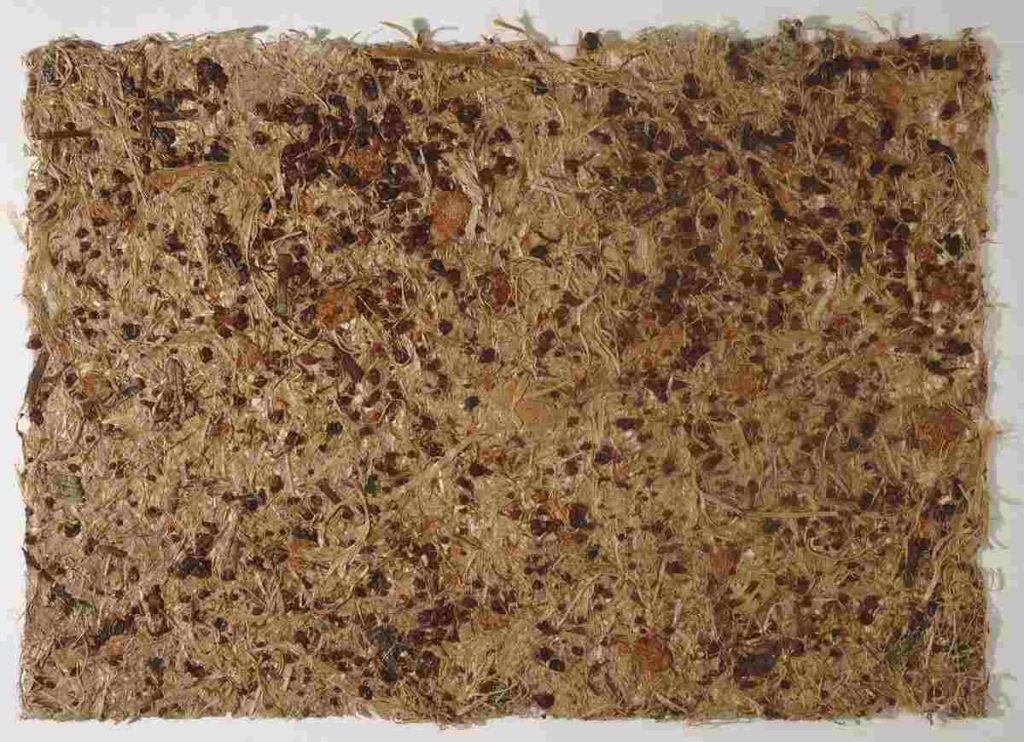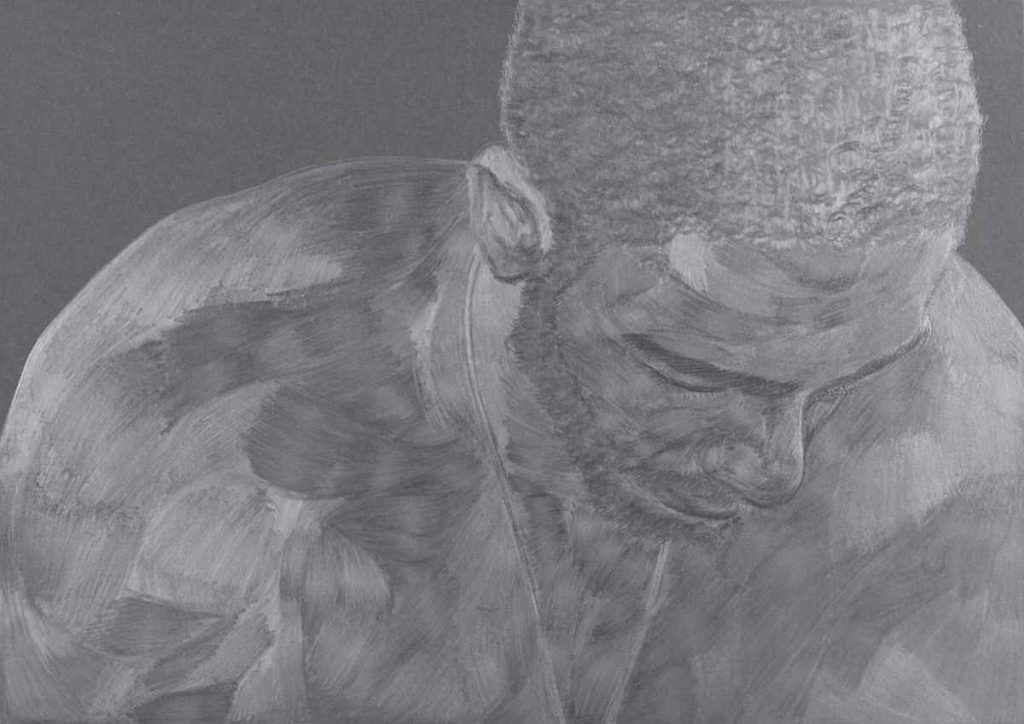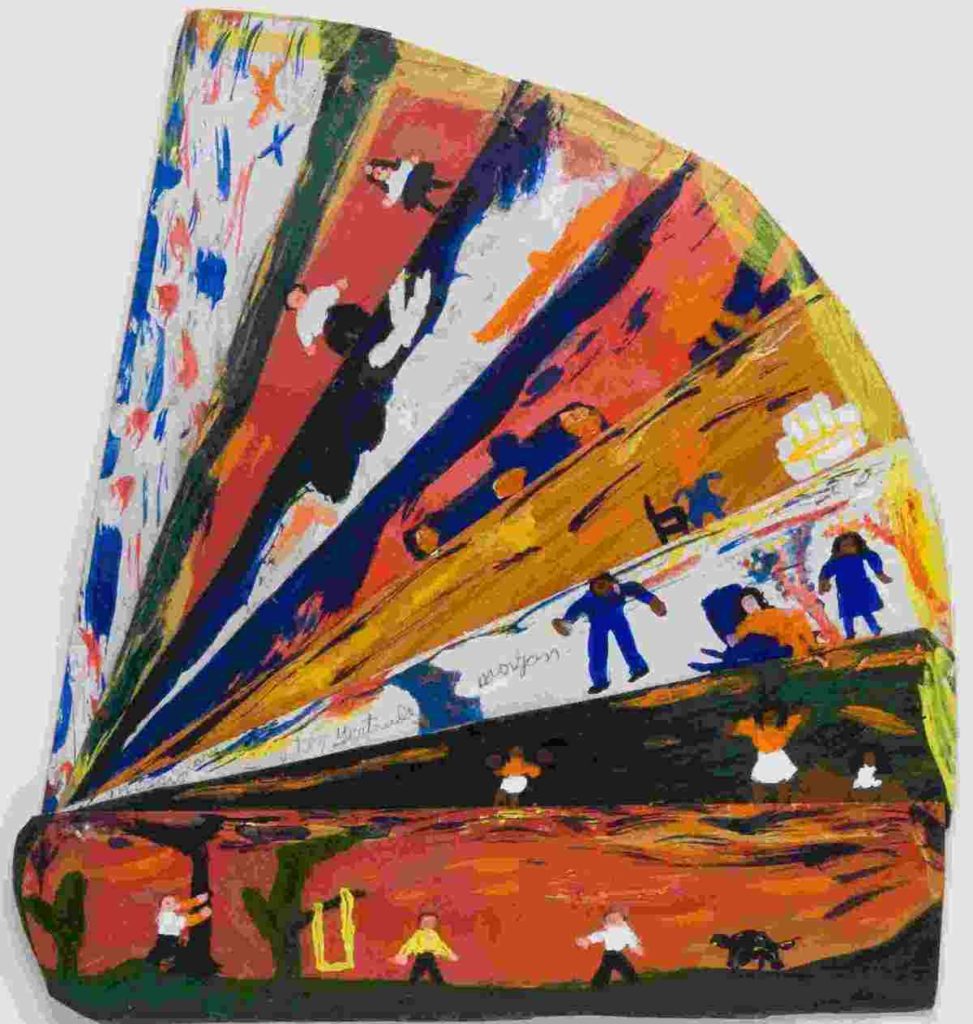ART
Beautiful visual effects from Howardena Pindell’s Untitled No. 89, 1977 on display at the Philadelphia Museum of Art
A new exhibition at the Philadelphia Museum of Art interrogates how different generations of artists use unexpected surfaces and unorthodox materials for visual effects and meaning.
BY KAZEEM ADELEKE
PHILADELPHIA, PA — Presently at the Philadelphia Museum of Art is Unexpected Surfaces, an installation that investigates how artists use surprising materials to create beautiful visual effects in their photography, drawings, and prints.
The installation features work by contemporary and famous artists who deviate from using traditional materials in their work. There are also artworks by artists who use traditional materials in the most unorthodox manner. The list of artists in this art exhibition includes Sister Gertrude Morgan, Franz Kline, Cai Guo-Qiang, Joan Miró, and Jean-Baptiste-Camille Corot. Others are Toyin Ojih Odutola, Howardena Pindell, Mona Hatoum, Natalia Sergeyevna Goncharova, and John Cage.
The Art Materials
Some materials used by these artists include postage stamps, newspapers, plants, and found objects. Others are strapping tape, strings, threads, gunpowder, graphite, glitter, acrylic paint, opaque watercolor, oil pastel, and hibiscus stems.
Unexpected Surfaces is an opportunity to ponder why artists use unorthodox materials in their works. Throughout art history, artists have shown a propensity to use unusual materials in their works. Gustav Klimt, for instance, used gold in his work to effectively communicate his intentions and create amazing visual effects.
Why Artists Use Unorthodox Materials
There are numerous reasons why artists use unconventional materials in their works. While some artists explore these materials for their distinct visual effects such as shape, texture, color, luster, and transparency, others use them to communicate specific messages. Artists who use silk, for instance, do it because of the shine that is impossible to achieve with matte paper. Silk and other textiles have also been used by artists like Sheila Hicks, Faith Ringgold, and Alexandra Kehayoglou to raise gender issues, preach religious intolerance, and question environmental degradation.
Environmental degradation has also been the focus of the work of artists who use reflective plastic. The reflective quality of plastic makes it the favorite of artists who create interactive pieces that encompass the viewer and the environment. For instance, Dutch artist Thijs Biersteker uses his interactive sculptures made of reflective plastic to incorporate viewers and raise questions about plastic pollution.
There are artists across the globe who prefer to use found and discarded objects for their work. To access these materials, they go to construction sites, dumpsters, and other places where they can find whatever meets their creative needs. A notable example is El Anatsui, who uses bottle tops to create beautiful works of art.
The artists in Unexpected Surfaces underscore how specific artists use materials to highlight their creativity and address issues. While some materials are creatively explored to produce curious and beautiful visual effects, other materials reveal the playful side of the artists and their creations. However, in some instances, the materials help artists make poignant commentaries on issues like race, gender, and materialism.
John Cage: Wild Edible Drawings
Through their creative process, the artists in Unexpected Surfaces elevate everyday materials to the realm of fine art. An important example is Wild Edible Drawing #3 by American artist John Cage (1912-1992). It shows how artists use unusual surfaces and materials to generate and achieve specific objectives.

Close to the end of his life, Cage made a series of Wild Edible Drawings using his macrobiotic diets, like whole grains, locally grown fresh veggies, sea veggies, and beans. Wild Edible Drawing #3 is one of them. Made from plants like Kudzu, hibiscus stems, cattail, yellow dock, barley, eucommia, and clover, the image is rich in texture and movement. These inherent elements situate the piece on the threshold of abstraction expressionism, yet it can be described as a minimalist relief sculpture because of its layered materials and limited color.
Recipe for Visual Effects
John Cage‘s concocted recipe for Kudzu, hibiscus stems, cattail, yellow dock, barley, and eucommia in Wild Edible Drawing #3 makes it sound delicious. So, are John Cage’s Wild Edible Drawings series edible? It depends on who you ask. While some people say the answer is “No,” many others say the answer is “Yes.”
Also in the show is Untitled No. 89 by American artist Howardena Pindell. Until recently, Pindell was not getting the attention she truly deserved. Born in Philadelphia in 1943, Pindell studied painting at Boston University and Yale University. For decades, she has devoted herself to imparting knowledge and teaching the next generation of artists. Furthermore, she has also been practicing as an artist. The 2020 exhibition at the Garth Greenan Gallery in Chelsea was epochal in the artistic career of this artist because it opened the door to the recognition of her amazing creativity.
A prolific painter and mixed-media artist, Pindell creates masterworks that address issues of race, physical trauma, memory, and the human experience. Untitled No. 89 shows the devotion and diligence that go into her creative process. To create the piece, the artist hole-punched cardboard and papers to create small circles. These are then affixed to a board using glue, threads, watercolor, and pastel. The result is an assemblage of a visually pleasing combination of reds, greens, oranges, pinks, and blues. The confluence radiates joy and glistering happiness. Untitled No. 89 is an important example of how Pindell intentionally subverts traditional materials to make poignant commentary.
Toyin Ojih Odutola Portrait of M7

Traditional Art Materials
Unexpected Surfaces also includes works by artists who use traditional art materials in unorthodox ways to create interesting works of art. One of them is M7 by Toyin Ojih Odutola. The drawing reveals Odutola’s initial love of art-making, which was sparked by a regular ballpoint pen. Over the years, simple art tools and media have inspired her creative impulses and guided her process. Using only basic drawing materials like pen, pencil, pastel, and charcoal, the artist creates impressive works addressing gender, feminism, and other topical issues.
In M7, Odutola uses graphite to depict the portrait of a man who seems engrossed in something not visible to the viewer. Working on black paper, the artist blended and shaded the graphite to create a silvery patchwork of textures and tones that seem to reveal the man’s tortured experience. That experience is further accentuated by the man’s pensive expression and body language. The figure’s upper torso and face are a patchwork of light, grays, and darks in a way that reveals a staccato and modulations of life experiences. Odutola has always seen portraits as the surface to make marks, and that is evident in this piece.
Exploring Unorthodox Materials for Visual Effects
Although Unexpected Surfaces is limited in scope to prints, drawings, and photographs, it is still an eye-opener on how artists are exploring unorthodox materials to achieve dynamic visual effects. The works reveal the devotion of artists to using whatever they have to create engaging works of art. While some works reflect the spur of the moment, like Untitled (ZD) by Franz Kline, others require diligence and laborious dedication.
Jean-Baptiste-Camille Corot’s Un Lac du Tyrol, a landscape etching shows how the artist uses lines to communicate emotions and tension. Postage Stamps: Peony by the Chinese artist Cai Guo-Qiang is a sheet of 16 postage stamps with gunpowder explosion marks on them. The artist uses gunpowder as one of the major materials for his works.
Sister Gertrude Morgan: Art and Soul

Church Fan: Missionary Sister Gertrude Morgan by the American artist Sister Gertrude Morgan depicts the fans African American women use when they are in church on a warm summer day. The fan includes opaque watercolor on thin tan cardboard and white thread. It has paintings of people having fun in a park. A devote Christian, many of Gertrude Morgan’s works are based on Bible teachings. Precious Land, a painting by the artist sold recently for $68,750 at Christie’s in 2017.
Experimental Sensibility
Cardbird V by Robert Rauschenberg consists of corrugated cardboard with relief printing, photomechanical prints, strapping tape, string and paper tags, and a porous point marker. It emphasizes the artist’s popular experimental tradition. Mona Hatoum’s Large Shaker Colander consists of punched and crumpled translucent wove paper. It is a reminder of the devotion of the artist to using everyday ideas to address gender issues.
The Spanish artist, Joan Miró, used oil paint, graphite, and a collage of cut paper on sandpaper to create Painting. The combination of materials for this piece speaks to the artist’s nonconformist and experimental sensibilities. Female Figure by the Russian artist Natalia Sergeyevna Goncharova consists of pastel and graphite on red woven paper. Although Sergeyevna Goncharova’s is made of traditional art materials, it reveals how regular materials can be explored for an unusual finish.

